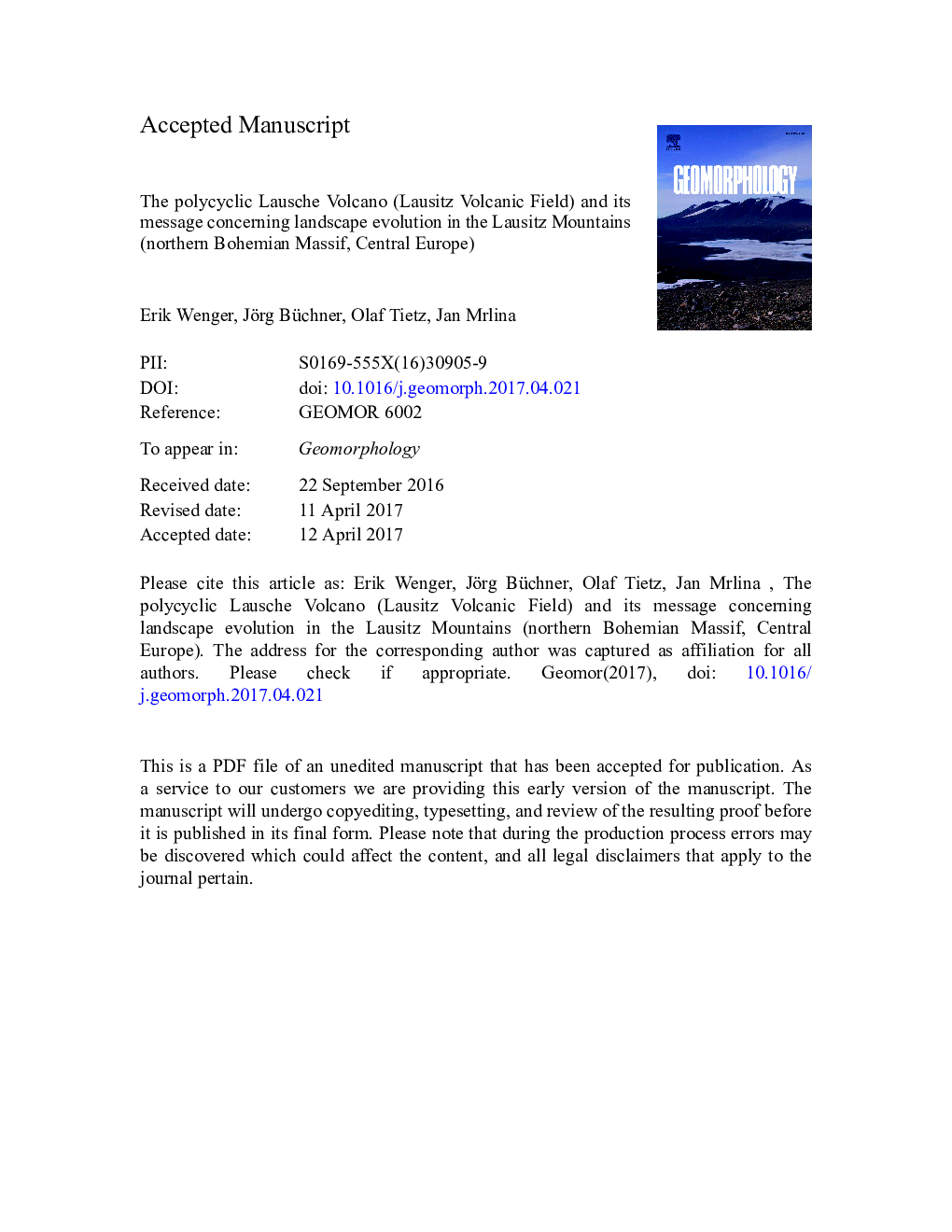| کد مقاله | کد نشریه | سال انتشار | مقاله انگلیسی | نسخه تمام متن |
|---|---|---|---|---|
| 5780894 | 1635357 | 2017 | 63 صفحه PDF | دانلود رایگان |
عنوان انگلیسی مقاله ISI
The polycyclic Lausche Volcano (Lausitz Volcanic Field) and its message concerning landscape evolution in the Lausitz Mountains (northern Bohemian Massif, Central Europe)
دانلود مقاله + سفارش ترجمه
دانلود مقاله ISI انگلیسی
رایگان برای ایرانیان
کلمات کلیدی
موضوعات مرتبط
مهندسی و علوم پایه
علوم زمین و سیارات
فرآیندهای سطح زمین
پیش نمایش صفحه اول مقاله

چکیده انگلیسی
The Tertiary Lausitz Volcanic Field covers a broad area encompassing parts of Eastern Saxony (Germany), Lower Silesia (Poland) and North Bohemia (Czech Republic). Volcanism was predominantly controlled by the volcano-tectonic evolution of the OhÅe Rift and culminated in the Lower Oligocene. This paper deals with the highest volcano of this area, the Lausche Hill (792.6Â m a.s.l.) situated in the Lausitz Mountains. We offer a reconstruction of the volcanic edifice and its eruptive history. Its complex genesis is reflected by six different eruption styles and an associated petrographic variety. Furthermore, the Lausche Volcano provides valuable information concerning the morphological evolution of its broader environs. The remnant of an alluvial fan marking a Middle Paleocene-Lower Eocene (62-50Â Ma) palaeo-surface is preserved at the base of the volcano. The deposition of this fan can be attributed to a period of erosion of its nearby source area, the Lausitz Block that has undergone intermittent uplift at the Lausitz Overthrust since the Upper Cretaceous. The Lausche Hill is one of at least six volcanoes in the Lausitz Mountains which show an eminent low level of erosion despite their Oligocene age and position on elevated terrain. These volcanoes are exposed in their superficial level which clearly contradicts their former interpretation as subvolcanoes. Among further indications, this implies that the final morphotectonic uplift of the Lausitz Mountains started in the upper Lower Pleistocene (~Â 1.3Â Ma) due to revived subsidence of the nearby Zittau Basin. It is likely that this neotectonic activity culminated between the Elsterian and Saalian Glaciation (~Â 320Â ka). The formation of the low mountain range was substantially controlled by the intersection of the Lausitz Overthrust and the OhÅe Rift.
ناشر
Database: Elsevier - ScienceDirect (ساینس دایرکت)
Journal: Geomorphology - Volume 292, 1 September 2017, Pages 193-210
Journal: Geomorphology - Volume 292, 1 September 2017, Pages 193-210
نویسندگان
Erik Wenger, Jörg Büchner, Olaf Tietz, Jan Mrlina,